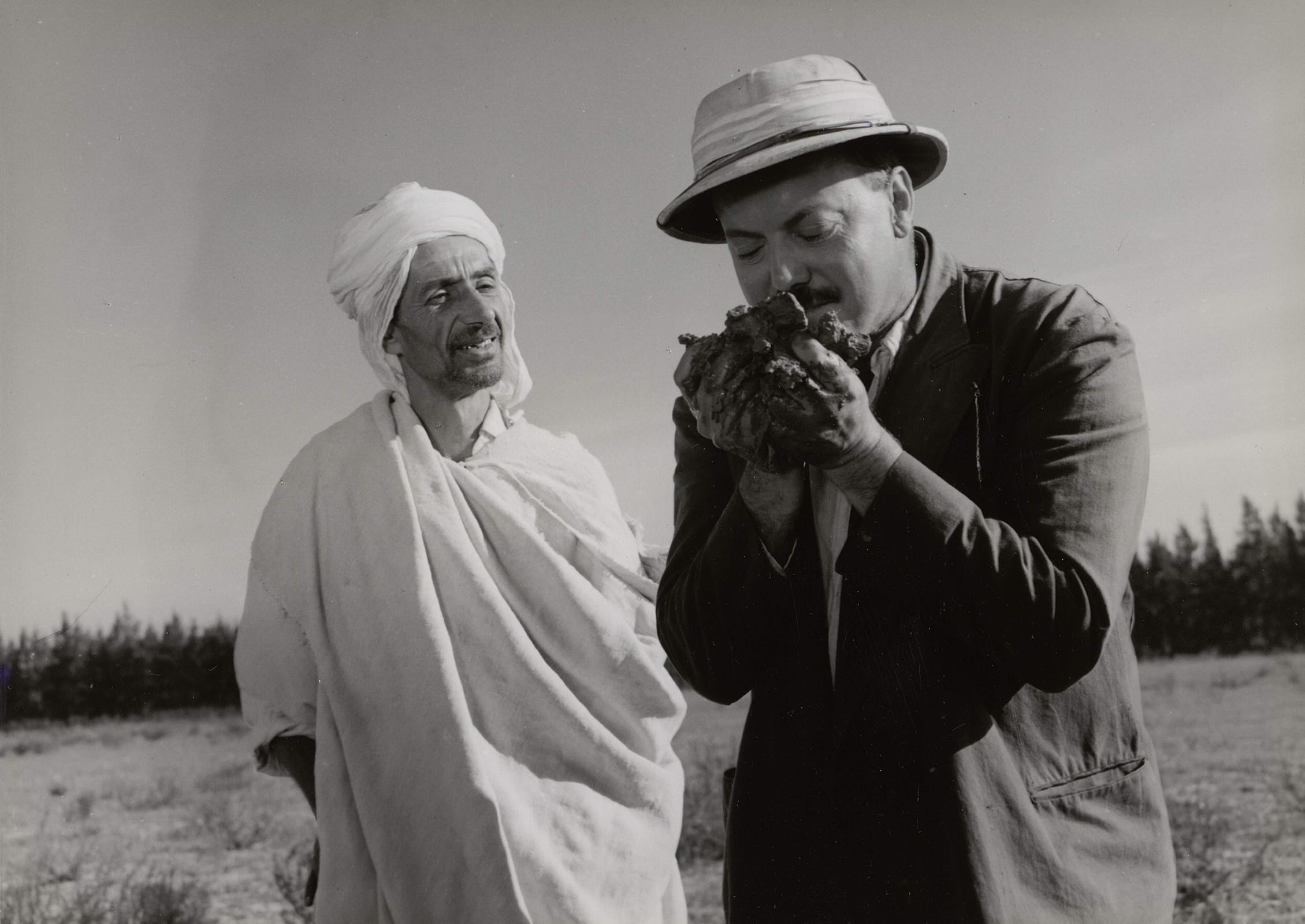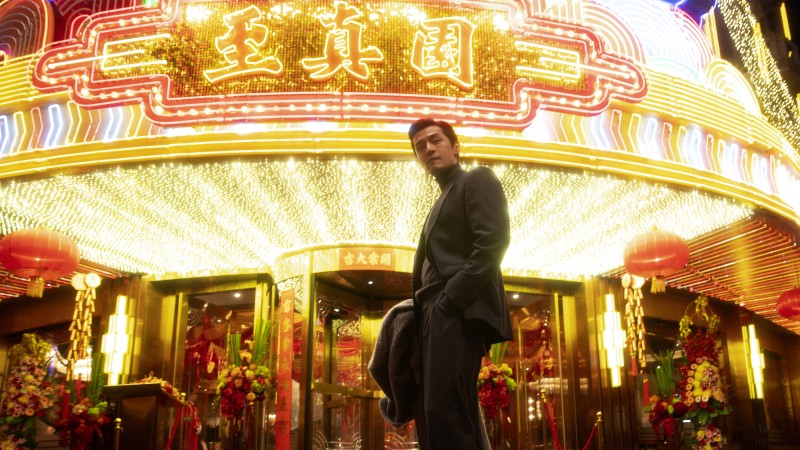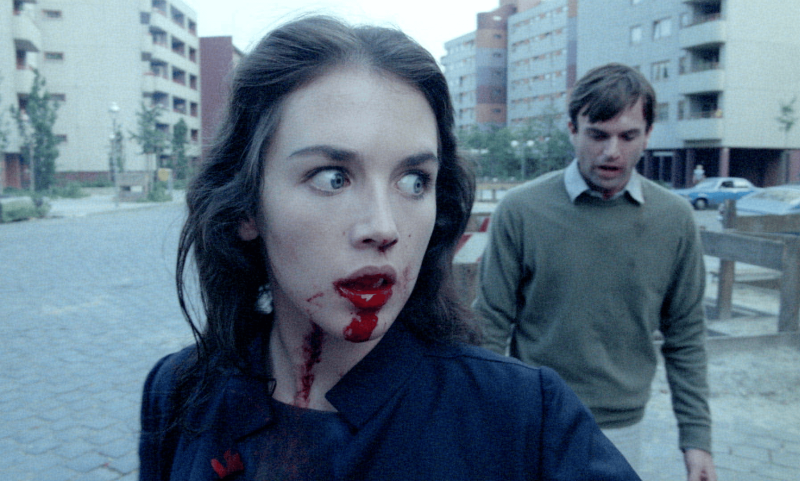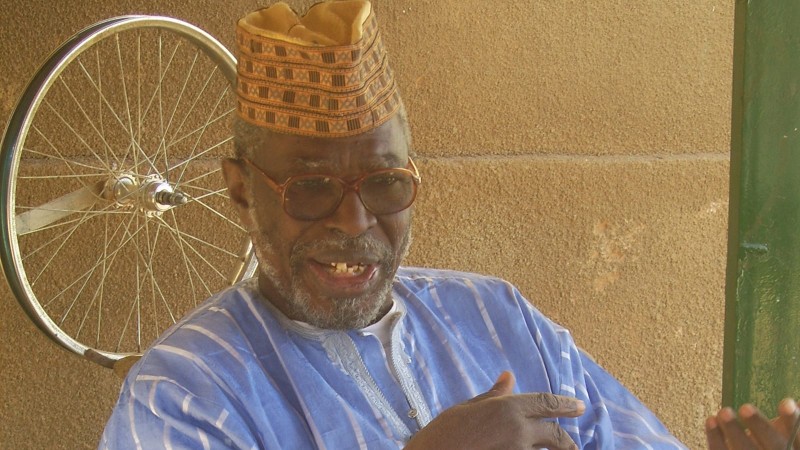There is a similar vitality in Binka Zhelyazkova’s
A byahme mladi (
We Were Young, 1961), a semiautobiographical film about a group of young communist partisans during the Nazi occupation of Bulgaria. They are committed antifascists who plan bombings and sabotage, and sew packets of poison into their clothes in case of capture (like
Sambizanga, this film culminates with scenes of torture and death in prison), but they are also restless, dreamy, clowning youngsters. Zhelyazkova seems more interested in their moments of failure and doubt, of exuberance and shy yearning, than in their cause. Her dazzling and poetic style is the cause: it is freedom.
We Were Young opens with a literal bang, as a shot topples a man in the street and flocks of birds scatter out of the trees, flying in formation like fighter jets. The same kinetic rush comes in a scene of innocent ecstasy, when a young girl in a hand-pedaled wheelchair careens down a steep street, laughing. She snaps photographs of tussling shoeshine boys, babies with rattles, men in gas masks, fascist salutes, clown puppets—and the whirling film freezes to show what her lens has captured. Joy, art, and love are distractions, but also forms of resistance. Near the end, the young man and woman at the center of the story, Dimo and Veska (Dimitar Buynozov and Rumyana Karabelova), search for each other through the blacked-out, deserted streets of Sofia; all we can see is what the beams of their flashlights illuminate, circles of light nosing along the ground. (His nickname for her is “firefly,” and she objects that these creatures’ lights go out too quickly.) The beams meet, merge, and cross, finally lighting each other’s faces, hers wet with tears. This is as romantic a moment as I have ever seen in a movie, achieved with the simplest of means.
Another film by a woman in which walking through city streets becomes a way of recovering historical and personal memory is Annik Leroy’s
In der Dämmerstunde—Berlin (
Berlin at Dusk, 1980). Shot on 16 mm (and included in the “Great Small Gauges” strand), it follows the filmmaker through a hushed meditation on loneliness, twilight, trains, ruins, hotel rooms, lost love, and the ghosts of World War II. The camera trails behind or alongside her as she plods through interior courtyards, railway stations, snowy roadsides, and an alley beside the Berlin Wall. Words emerge—her own narration, snippets of poetry, and the voices of strangers debating German war guilt—as though she were a needle traveling through the grooves of a record.
As a rule, films made about wars while they’re being fought are propaganda, while ambivalence or resistance surface in retrospect. An exception is Les oliviers de la justice (The Olive Trees of Justice, 1962), a French production directed by the American James Blue, filming with an Algerian crew on the streets of Algiers and the plain of Mitidja during the Algerian War. The conflict is ever-present, but rarely seen. As the camera threads through bustling markets and outdoor cafés, it catches glimpses of police frisking young men, or clearing crowds away from suspected bombs in handbags. The main character is a pied-noir who has settled in France but returns to Algeria to attend to his dying father; he drifts in and out of memories of his childhood on a vast farm where he played with Arab boys amid vineyards and irrigation ditches. The film’s vision of colonialism complicates easy assumptions. It illustrates the blind, violent entitlement of settlers and the pain of natives who “have no country,” but also evokes the depth of visceral attachment that can bind colonizers to a place. At the heart of this story, somewhat inchoate, is the difference between believing land belongs to you and belonging to it.









